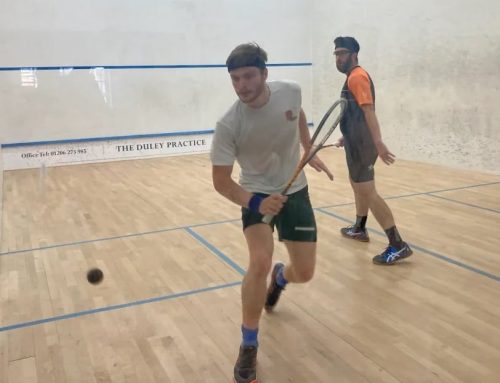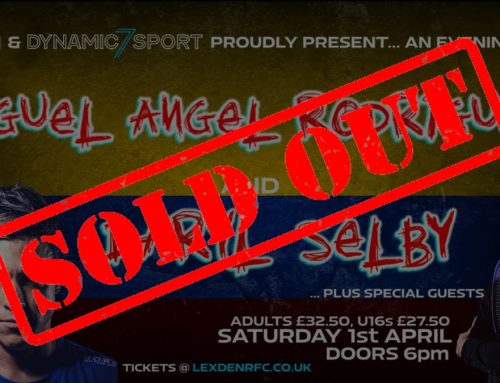‘Winning is the process of scoring points whilst at the same time stopping your opponent from scoring’
Simple really! If only it were we would all be world champion wouldn’t we?
When I started brainstorming this article on tactics, which is how I start the process of writing all my articles, scribbling down thoughts on paper in no particular order as they pop into my head, I ran out of room on the paper. That it how vast this area is. Putting my brainstormed scribbles in to a logical and digestible article is going to be challenging. I have picked out what I personally feel are some of the most important and appropriate ones.
How deep you delve into the tactical side of the game can depend on the level of player you currently are. Many of the basic tactics are fundamentally the same from beginner through to advance. You may not believe it when you watch them, but elite club players or even touring professionals share many of the same tactics as you do in your division 12 box league match!
Of course these are just a few basic base layer tactics, squash is a complex game with many variables and advanced players also have many more layers to cope with. The better you get the more layers there are and the more tactically astute you have to become along the way.
So let us start with a squash novice. By now, we have spent some hours with a coach or with other beginners either in a one to one or in a group situation learning the grip and swing, repeating our hitting, developing our hand eye co-ordination. Now it is time for some match play!
At this point something very strange can happen. A novice who was comfortably grasping the technical side of things in practice, displaying to the coach some great potential, goes and gets thrashed in their first match verses a fellow novice. Even stranger was the fellow novice hadn’t shown much potential at all in those basic practices, worst still, they are in terrible physical condition. How could that have happened to the player who had shown such potential?
One word ‘TACTICS!’
Tactics are the extension of your technical and physical preparation. To compete in squash you have to learn the technical side of the game; grip, swing, shots; accuracy etc. Understand the physical demands of the game; footwork; speed; stamina. However, If you are competently mastering those skills and in some cases doing them better than your opponent but still losing you have to ask yourself ‘are my tactics correct?’
The answer is probably no. If you are a novice then you don’t just lack experience in your general ball striking and shot accuracy but you will also lack experience in tactical awareness. This will hopefully improve over time as you gain more experience playing matches and attending coaching sessions.
The first two shots players must execute in match play will be the serve and the return of serve. Learning to play these shots successfully is paramount to player progression. I will go into greater detail of what makes a good serve or a great return and how to do it, when focusing on these shots in further detail in future articles. For now let’s just say a top 5 tactic has to be develop these two very important shots. They alone can both win and lose you matches. The return of serve is quite rightly the number one request from pupils paying for one to one lessons and if it’s not their choice then I choose it for them!
Once into a rally you will quickly determine that to win points, hitting the ball away from your opponent accurately into the corners and close to the side walls, using a variety of different shots with varying heights and pace without error is a priority. Unfortunately your opponent is also implementing this same fundamental strategy therefore you must try to counter this by being in the centre of the court close to the ‘T’. This gives you the greatest possible chance of retrieving all their shots as the ‘T’ is more or less equidistant to all areas of the court. It is widely believed in squash that the player who dominates the ‘T’ will be the player that dominates the match.
Accurate, constructive play without errors, keeping the ball away from your opponent, manoeuvring them around the court whilst keeping control of the ‘T’ will begin to mount great pressure on them. This pressure will often reward you with dividends. Your opponents will end up out of position tossing up loose weak shots, leaving you big empty spaces in which to dispatch your winners. This consistent pressure you are applying on your opponents will quickly result in them becoming frustrated, fatigued either physically or mentally (sometimes both) and most likely cause them to make errors, gifting you points as they take greater risks in their own play, going for low percentage shots from difficult situations in a desperate bid to win points.
Unfortunately it is not always this straight forward, sometimes you may be on the receiving end. There will be moments when your opponent will put you under pressure, being able to tactically cope with this is key. When your opponent attacks you and plays a very good shot what do you do? You are rushed, potentially unsteady, off balance and a long way from the ‘T’. In that split second you have a few responses to select from. Whether you pick the best one in that brief moment is a test of your tactical awareness. Do you defend? Do you counter attack? Do you hit hard or soft, long or short, high or low, cross or straight? The wrong tactical choice could see you spiral further out of control and into deeper strife. However, the right choice could nullify their attack or better still turn the situation back in your favour.
As your playing level improves, so do your opponents. I mentioned earlier in the article ‘the more advanced the players are, the more layers of tactics there will be’.
Players of advanced level have the ability to consistently retrieve your shots. This is sometimes due to their physical attributes developing such as: agility; footwork; strength and stamina but also due to their increased ability to read the game and anticipate shots. Novices and club players are often amazed at the length of advanced and professional level rallies. When an experienced advance player is kind enough to have a friendly game with a player of significantly lower level, the lesser player is always surprised by the advanced players speed to retrieve their shots. It almost feels as if they knew where the ball was going before it was even hit. That is because they do!
Learning to read your opponent and anticipate their shots is vital to a player’s advancement to a higher level. Therefore what can we do to prevent being read? Deceive!
Deception is a tactic that a player must try to start introducing into their game as soon as technically able. Learning to play all the shots is one thing but being able to disguise them and fool one’s opponent is another. If your swing preparation is correct as discussed in previous articles, you should also have the ability to hold your opponent, forcing them to stand still, become flat footed, deliberately delaying your shots as well as disguising them. ‘It doesn’t matter how fast a player is if they are moving in the wrong direction’.
‘Don’t be a Wally hit it on the volley!’ (P, Allen 2020). We cannot talk tactics without discussing the volley. Volleying is massively beneficial for players of all levels. For the novice retrieving the ball from behind you or from out of the back corners is technically very difficult, so try to prevent it from reaching the back corner by volleying. A pupil who had only be playing a few months asked me in a lesson once, ‘how do I get the ball out of the back corners?’ My answer was simple ‘don’t let it get there in the first place!’ This was the best advice at the time, as this particular pupil still had months of technique to develop before even attempting sessions on hitting out of the back corners.
Looking at it from a more advanced player’s point of view, the volley can also be used to take time away from your opponent. Cutting your opponents length shots out through volleying will reduce the time they would normally use for recovering their court position. When hunting the volley a player can decide to either exploit the empty space by attempting to dispatch their volleys as outright winners or alternatively continue to manoeuvre and work their opponent to cause fatigue. This fatigue will hopefully result in dividends later in the rally, game or match.
This leads nicely into my next tactic, ‘lifting the ball’. Using height on the front wall is probably the most neglected tactic of all at club level. When a player first starts learning squash they will regularly use height as they do not yet possess power. The ball is barely warm so height is their only means of getting length. Sadly, this early tactic is quickly forgotten as a player develops more power. Often the more power a player has the lower and harder they continuously try to hit it. We have a term in squash for this ‘Hacker!’ Of course there are some great benefits to be had hitting hard and low, but sadly player’s who do this to often sometimes lose sight of the benefits hitting high can also bring.
Previously, we spoke about the advantages of volleying. One of the best tactics to counteract the volley is to use height. Player’s who like to hunt the volley particularly relish the opportunity to volley the ball between head and waist height. To get the ball past them you have to either go under or over this optimum volley area. The problem with hitting low and hard in an attempt to pass your opponent is that you often find yourself under too much pressure to execute it with the power and accuracy required. If you fail to play it perfectly you begin to lose your length as your drives will often bounce a long way short of the back corners. If this is the case maybe try going over them instead? Lifting the ball over a volley expert not only gets the ball past them but also gives you more time between shots to recover the ‘T’ position. Continuously denying a player opportunity to volley can be very frustrating for them especially if it’s one of their strengths. Counteract their strength and you are on your way to tactically getting the better of this opponent. A few years back in the nationals I saw Daryl Selby execute this tactic perfectly to get a rare win over volley specialist and former world number one Nick Matthew. Daryl was the underdog in this match, using height to consistently deny Nick the volley played a huge part in his historic win.
Don’t forget the higher up the front wall you go the softer you have to hit the ball in order for your length to remain effective, this is your ‘weight of shot’. Shots that are over hit and fly off the back wall on the full are not particularly good, they can be easily attacked by your opponent. This means that using height is not only good for evading the volley but by hitting softer it becomes a great way to slow down the tempo of a rally, game or match. This may be required in several situations: defending with a lob; slowing the pace of the ball down when playing someone known for their hard hitting; getting a breather when fatigued; slowing down a fast moving player to mess with their timing. Using height on the front wall is a great tactic and a valuable asset that can be used in many circumstances.
Just remember, when considering match play tactics you have to be able to view it from both sides yours and theirs. First ask, what can you control? We sometimes refer to this as ‘play your own game’. What this means is to try to implement your own strengths. For example: you might have a very powerful hit; a brilliant lob serve; deadly touch around the front of the court; unlimited stamina etc. Then we have to consider our opponent, through either having played them previously, watched them play, hearing about them through others experiences, or comparing them with other opponents with similar attributes we can start to anticipate what to expect from them and how we are tactically going to cope or better still exploit.
Ultimately, in order to gain as much experience and knowledge to develop your tactics as quickly as possible play lots of different opponents of varied ability. Use the club box leagues, friendly matches, round robins and club social tournaments for this. Do not just play the same person all the time, yes of course you will figure out all their particular strengths and weaknesses and you will work out tactically how to get the better of them, but when it comes to playing other players who have different strengths and weaknesses, you will have very little prior experiences to call upon.
Through playing different opponents you will develop your tactics by having to find out new ways of coping with their strengths and exploiting their weaknesses. This may even take you a few attempts and it may get more than a little frustrating when you have to explain to your wife and kids that you just lost to a seventy five year old, again! However, just take a minute to consider how much experience that seventy five year old has at his disposal, knowledge gained through playing thousands of matches against hundreds of different opponents. An experienced player knows their own strengths and how to use them, as well as being aware of their own weaknesses and how to avoid them. They will have a data base inside their head with many files created through trial and error over the years. They will call upon this database when required to cope with different opponents with various playing styles. A novice will not yet have this data base, but through playing as often as possible against as many different opponents as possible you will hopefully accelerate your tactical knowledge.
Look out for my next article ‘the serve and return’ coming soon.





